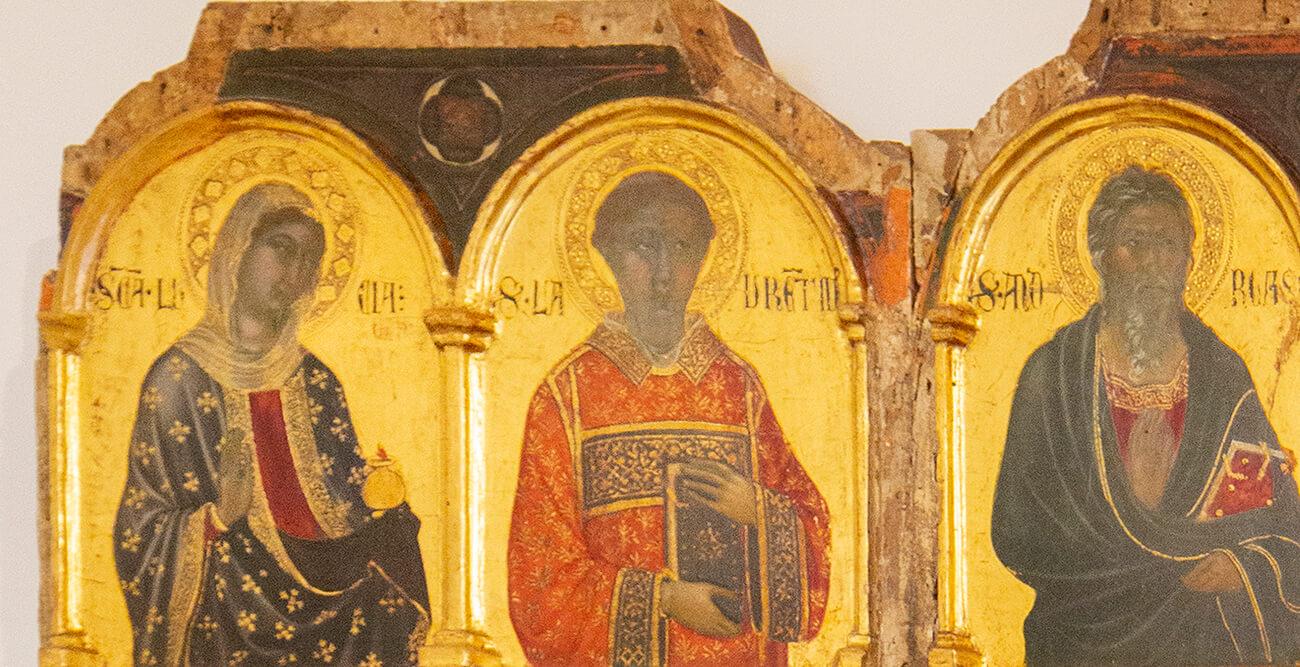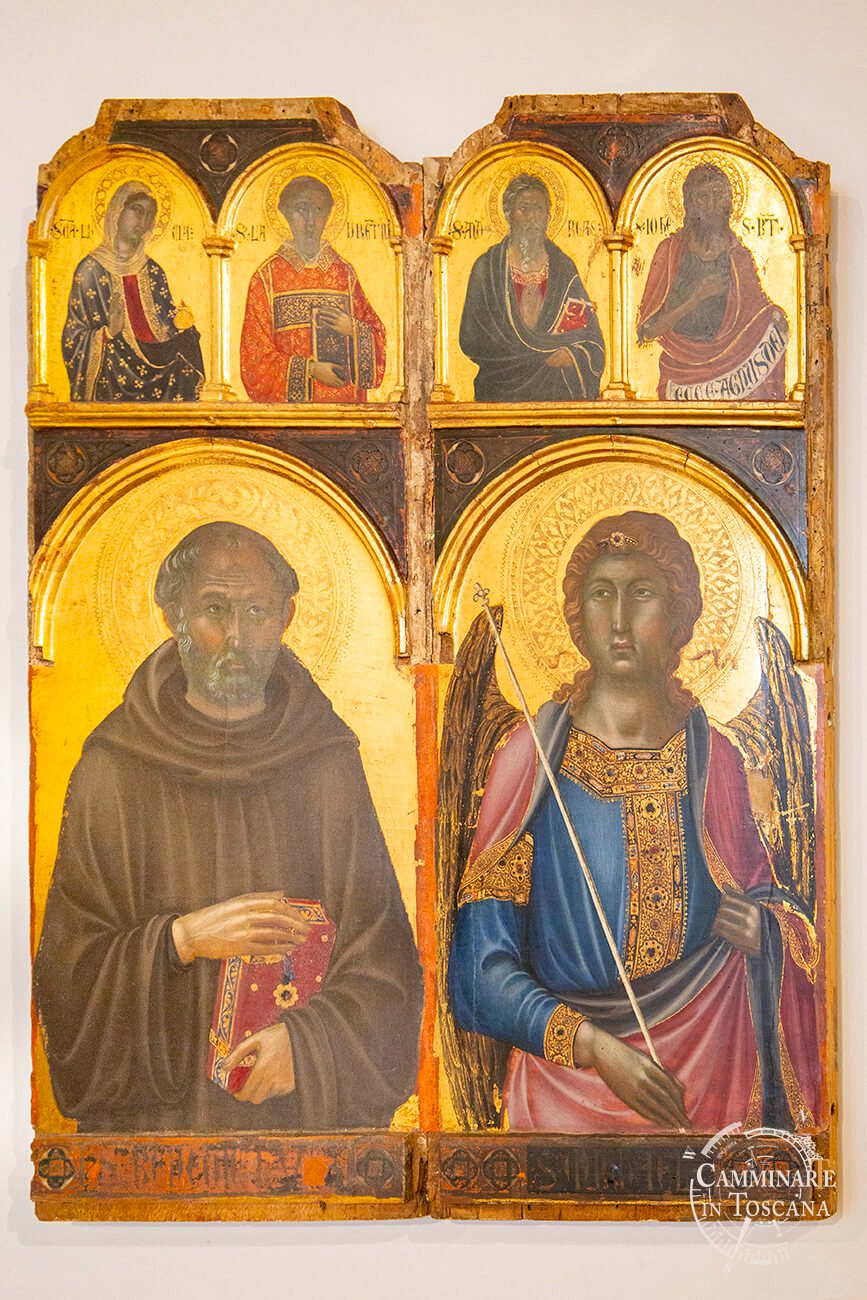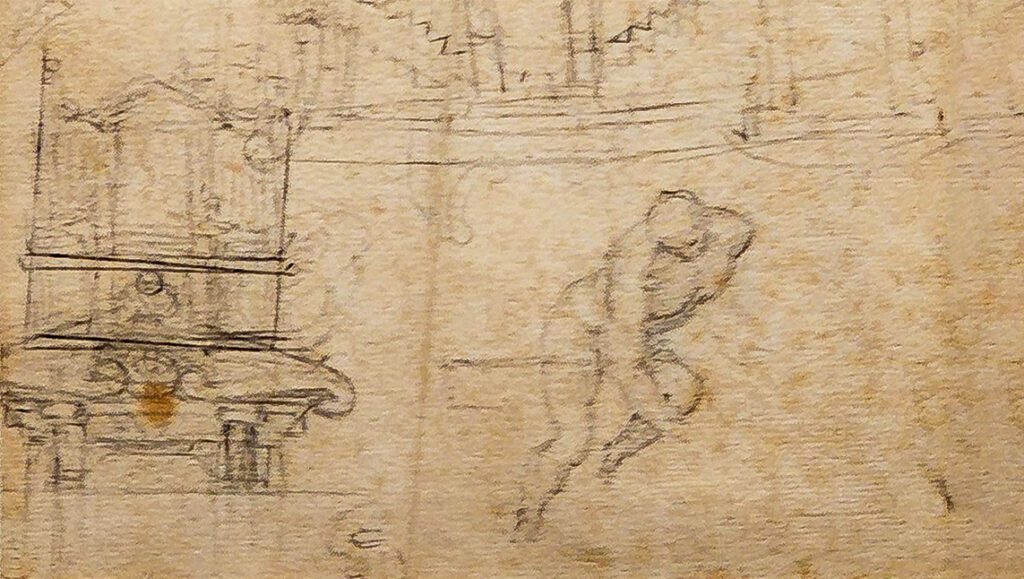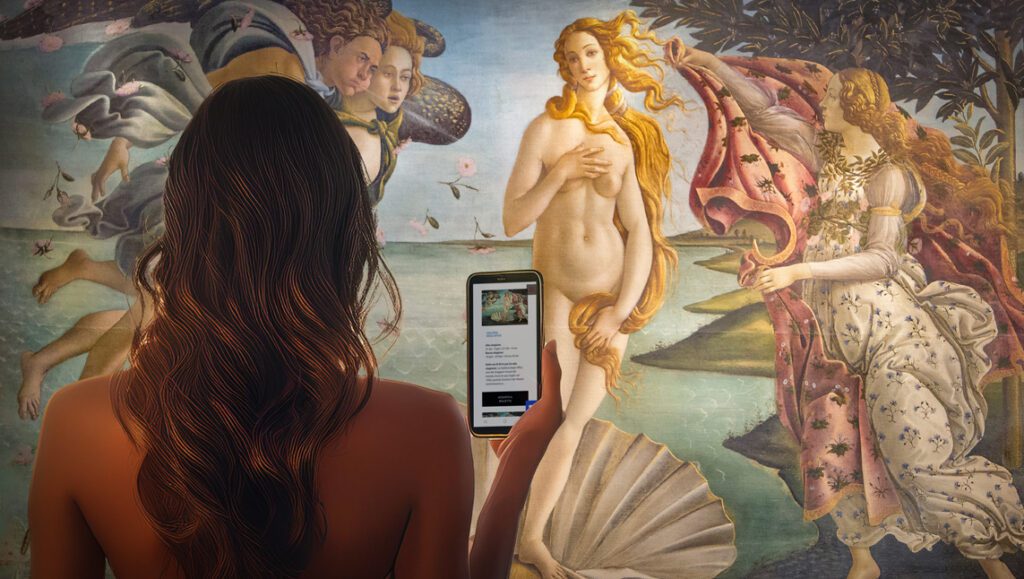
Paintings to discover in the Pinacoteca di Siena
A tour to discover what there is absolutely to see in the Pinacoteca di Siena allows you to discover a wonderful collection of paintings, one of the most significant sets of gold-ground panels in the world.
The Sienese museum houses works by famous masters, such as Duccio di Buoninsegna, Ambrogio Lorenzetti and Domenico Beccafumi.
The life of San Lorenzo
Before talking about the polyptych by Niccolò di Segna to be seen in the Pinacoteca di Siena in which San Lorenzo is represented, I will give a brief introduction to the figure of this martyred deacon, commemorated by the Catholic Church on 10 August.
Lorenzo, a native of Huesca, in the Aragon region of Spain, was one of the deacons of Rome. He completed his “humanistic” studies in the city of Zaragoza. Here he met the future Pope Sixtus II who was one of his most appreciated teachers in Zaragoza.
Together they moved to Rome and when Sixtus was elected Pope in 257, he entrusted Lorenzo with the task of archdeacon, that is, head of charitable activities in the city.
In the following year, precisely at the beginning of August, the Emperor Valerian established, with an edict, that all bishops, presbyters and deacons were to be put to death. Sixtus II was killed on August 6, while celebrating the Eucharist in the catacombs of San Callisto. Four days later the same thing happened to Lorenzo.
It is not known with certainty whether Lorenzo was really burned on a grill, the fact remains however that since the 4th century he has been one of the most venerated martyrs of the Catholic Church and is traditionally represented with the grill, the presumed instrument of his martyrdom. Even Christian literature immediately celebrated the memory of Lorenzo, such as, for example, in the Panegyric of Pope Damasus or the Passio Polycromi.
The polyptych by Niccolo di Segna
Among the works of the Sienese masters that can be seen with a visit to the Pinacoteca di Siena, we find a polyptych by Niccolò di Segna in which San Lorenzo is depicted with sumptuous golden robes but without a grate, most likely due to the small size of the panel. The panel is kept dismembered and dates back to around 1320, i.e. to the initial years of the painter’s activity. It is a polyptych defined as “two orders”, according to a scheme “inaugurated” by Duccio di Buoninsegna with Polyptych No. 47 of the same Pinacoteca. The latter is the oldest preserved example of an altarpiece with multiple registers of figuration, a layout that would become the classic formula of the fourteenth-century polyptych (White 1979; Van Os 1984). Niccolò di Segna is considered a Duccesque painter, but from the very beginning of his activity he also proved to be sensitive to the pictorial novelties of the new artists, such as those introduced by Simone Martini in the Maestà of Palazzo Pubblico, painted in 1315.

Polittico n.47,, Niccolò di Segna, Siena, Pinacoteca
The punched technique
This is particularly evident in the figures in the upper register of Niccolò’s polyptych, which present punched halos, a technique introduced into painting by Simone Martini himself.
Niccolò di Segna was the son of Segna di Bonaventura, also an artist trained on the pictorial legacy of Duccio. As already mentioned, Niccolò in the early years will let himself be influenced by the painting of Simone Martini, but over the years his style will change, acquiring the formal vigor of Pietro Lorenzetti’s art.
The only works dated and signed by the artist are the painted Cross, also from the Pinacoteca and dated 1345, and a Madonna with child from the Montesiepi Chapel in San Galgano, dated 1336. From recent research, conducted by Roberto Bartalini, it seems that the his role should not have been marginal in the artistic panorama of the time. Precisely in the case of the Montesiepi chapel, the reconstruction of part of the Majesty and the Annunciation painted by Ambrogio Lorenzetti can be attributed to him. If he had been the one to intervene – just as we owe him the creation of the altarpiece mentioned above – then his position in the pictorial production of those years could be reconsidered ⟢
Bibliography
L.Bellosi, Duccio, alle origini della Pittura senese, 2005 (Italian edition)



